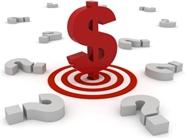Steel Markets

Home Prices Continue to Climb in Case-Shiller Indices
Written by Sandy Williams
June 26, 2017
Low housing inventory continues to drive up home prices for U.S. consumers. The latest S&P CoreLogic Case-Shiller U.S. National Home Price Index reported an annual gain of 5.5 percent in April, down from 5.6 percent in March. The 20-City Index increased 5.7 percent year-over-year compared to the previous month. The gains in April were slightly lower than analyst expectations, but still fueled concerns about whether the industry is experiencing a pricing bubble.
Seattle, Portland, and Dallas reported the highest year-over-year gains among the 20-City Composite, with increases of 12.9 percent, 9.3 percent and 8.4 percent, respectively. Pricing showed more stability for expensive homes, but was volatile for lower-tier homes, said S&P.
“As home prices continue rising faster than inflation, two questions are being asked: Why? And, could this be a bubble?” says David M. Blitzer Managing Director and Chairman of the Index Committee at S&P Dow Jones Indices. “Since demand is exceeding supply and financing is available, there is nothing right now to keep prices from going up. The increase in real, or inflation-adjusted, home prices in the last three years shows that demand is rising. At the same time, the supply of homes for sale has barely kept pace with demand, and the inventory of new or existing homes for sale has shrunk down to only a four month supply. Adding to price pressures, mortgage rates remain close to 4 percent and affordability is not a significant issue.
“The question is not if home prices can climb without any limit; they can’t. Rather, will home price gains gently slow or will they crash and take the economy down with them?” Blitzer added. “For the moment, conditions appear favorable for avoiding a crash. Housing starts are trending higher and rising prices may encourage some homeowners to sell. Moreover, mortgage default rates are low and household debt levels are manageable. Total mortgage debt outstanding is $14.4 trillion, about $400 billion below the record set in 2008. Any increase in mortgage interest rates would dampen demand. Household finances should be able to weather a fairly large price drop.”

Sandy Williams
Read more from Sandy WilliamsLatest in Steel Markets

CMC looks beyond Arizona micro-mill woes to long-term viability of construction mart
Despite the economic and geopolitical upheaval of the last five years, CMC President and CEO Peter Matt points out that the construction market has been an essential element of the way forward.

US importers face stricter rules under revamped S232 tariffs
“CBP expects full compliance from the trade community for accurate reporting and payment of the additional duties. CBP will take enforcement action on non-compliance," the agency said in a March 7 bulletin.

Steel exports rebound in January
US steel exports recovered to a five-month high in January after having fallen to a two-year low in December. This growth follows four consecutive months of declining exports.

Construction spending drops marginally in January
Construction spending edged down slightly in January, slipping for the first time in four months. The US Census Bureau estimated spending at a seasonally adjusted annual rate of $2,196 billion in January, down 0.2% from December’s downward revised rate. The January figure is 3.3% higher than a year ago. January’s result, despite the slight erosion, […]

HVAC equipment shipments slow in December but strong annually
Shipments of heating and cooling equipment in the US fell to an 11-month low in December, according to the latest data released by the Air-Conditioning, Heating, and Refrigeration Institute (AHRI).
